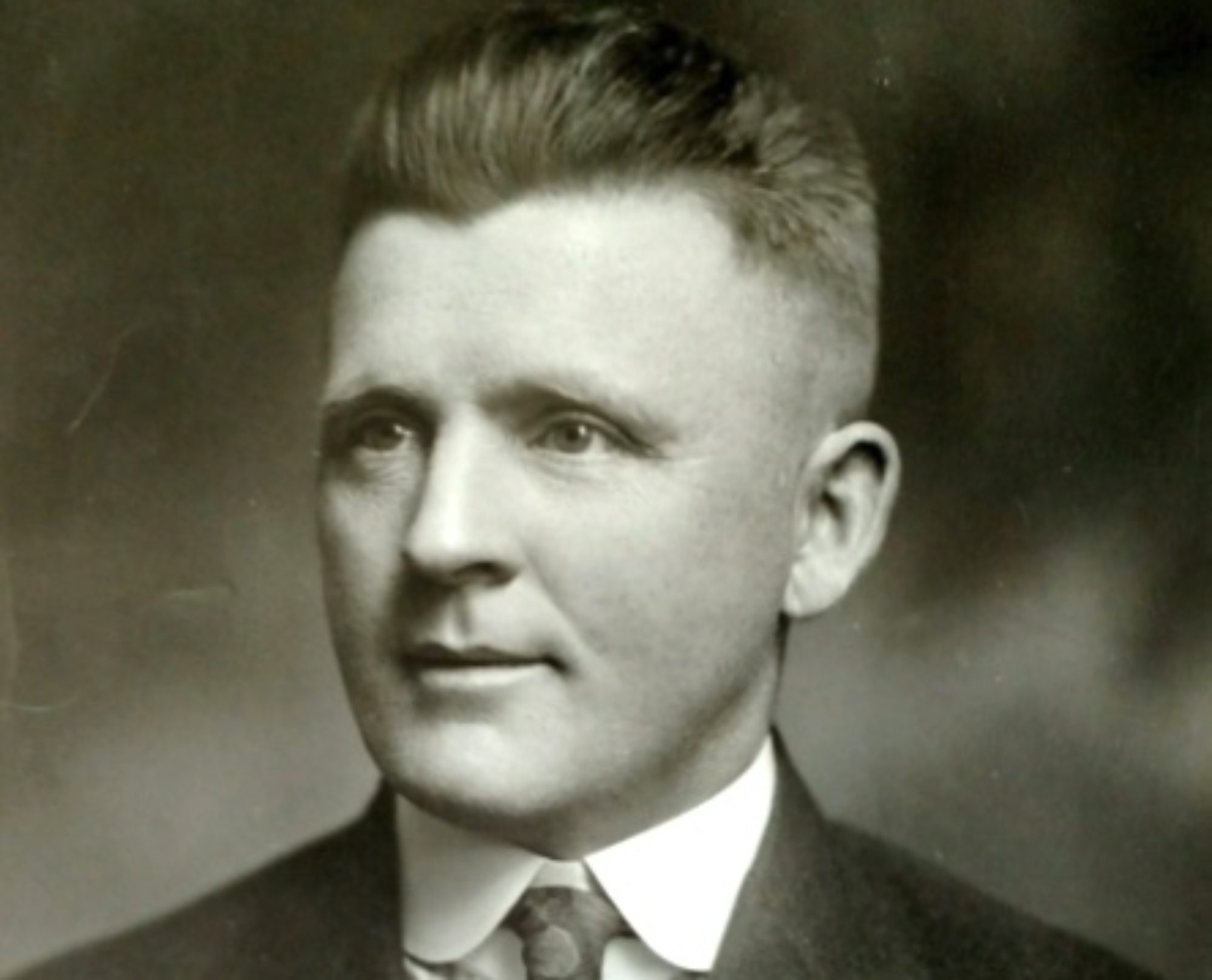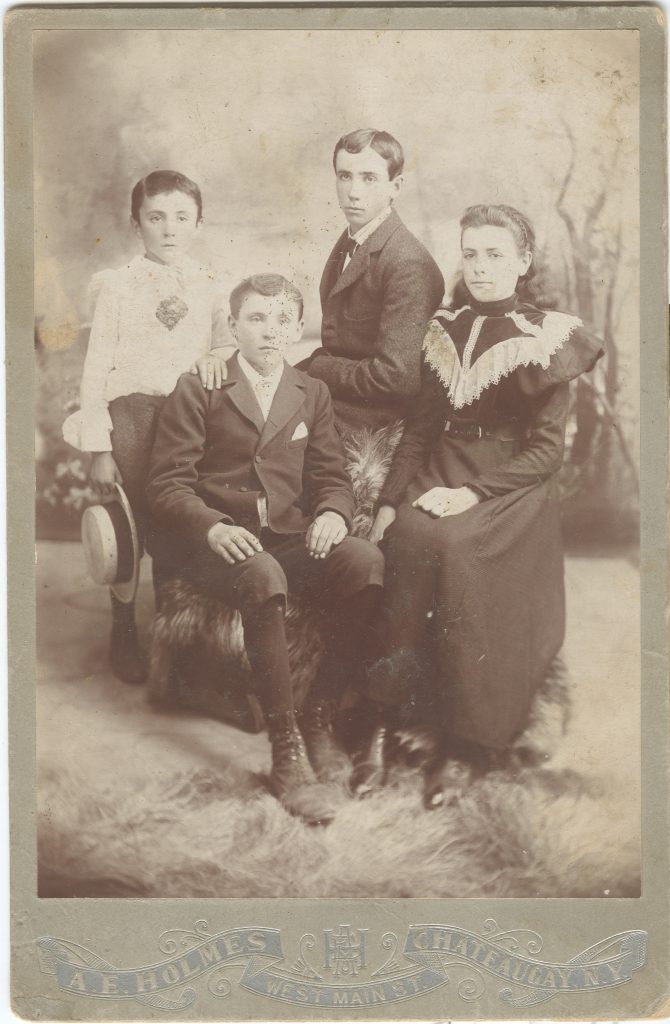This is one of a few pictures that I have with infuriatingly little information to go along with it. “Bradshaws” is written on the back in pencil. No date. No first names.
There are four people in this posed photograph, taken at the studio of A.E. Holmes, in Chateaugay, NY. Three boys and a girl. The boy on the left is wearing a lacy shirt and is holding a straw hat. The others are older, the boys wearing suits, and the girl wearing a dress with a lace collar. At first, the dress clothes, the stiff poses and unsmiling expressions make the older three appear to be almost young adults. On closer inspection they appear to be much younger – probably in their early teens at the oldest.
My dad looked at this picture a number of years ago, and was reasonably certain that this photo depicts his father and some siblings.
So here’s my guess:
Left to right: Matthew Bradshaw (1889-1996), Richard Bradshaw (1882-1957), Patrick Bradshaw (1881-1959), Agnes Bradshaw (Boss) (1884-1966).
Here’s my reasoning.
- These four were the youngest of Patrick and Johanna Bradshaw’s children.
- The 1900 federal census shows them as the only children living with Patrick and Johanna.
- The picture was taken by A.E. Holmes, who was in business in Chateaugay, NY from 1886 until 1899.
- The youngest boy (who appears to be none too thrilled about his attire) is about 7 – so if that’s Matt then this was taken about 1896. In that case Richard would be about 14, Pat 15 and Agnes 12.
- Based on pictures I have seen from a 1938 family reunion, the three boys look like Matt, Richard and Pat. I don’t have a picture of Agnes, but she was the youngest daughter.
I could be wrong about who’s who, and it’s even possible that they’re not Patrick and Johanna Bradshaw’s children. Patrick’s brother Richard lived nearby also, and had plenty of kids of his own. In any case, I’m confident that they’re family.
I have a couple of requests for the blog’s dedicated readers:
1) If there are any Bradshaw cousins out there who recognize an ancestor, let me know.
2) If anyone can help identify the year more closely (through clothing, the logo at the bottom or some other feature), I would be very grateful.
Thanks in advance.

